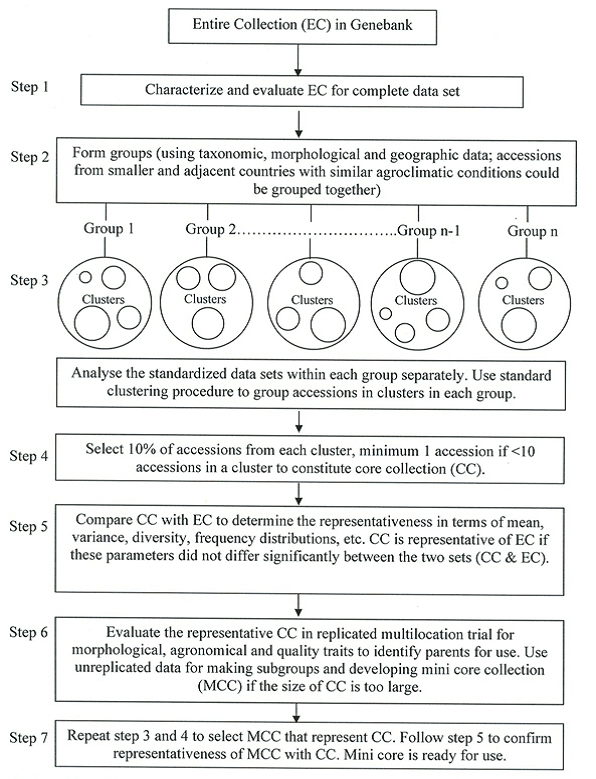-
Large gap exists between availability and actual utilization of the germplasm. This is true both in the International Programs (CGIAR institutes) as well as in the national programs. Extensive use of fewer and closely
related parents in crop improvement could result in vulnerability of cultivars to pests and diseases.
-
Germplasm distribution over the years indicated reduction in demand and the demand was for a limited number of accessions.
-
Most breeders are using working collections with less diversity leading to narrow genetic base in improved cultivars.
-
Greater use of genetic and genomic resources is needed for sustainable crop improvement, to protect the natural ecosystems and enhance agricultural production for food security.
Reasons for low use of germplasm
-
Large size of collections
-
Lack of data on traits of interest to the user.
-
Restricted access to the accessions.
-
Inadequate linkages between genebank and the users.
-
Limited capacity of breeding programs to absorb new material.
Enhancing germplasm utilization
-
Developed core (10% of entire collection) and mini core (1% of entire collection) collections of all mandate crops and foxtail millet.
-
Evaluated mini core collections extensively for agronomic and nutritional traits and resistance to biotic and abiotic stresses and identified several promising sources for utilization in crop improvement program.
-
Characterized about 98 per cent cultivated accessions.
-
Established networks and tested sets of selected germplasm and mini core collections at various locations in India and other countries.
-
Organized field days facilitating selection of promising germplasm by researchers.
-
Developed trait-specific genepools.
-
Developed composite collections and reference sets of genetically most diverse accessions.

Figure: Flow diagram to establish core and mini core collections.